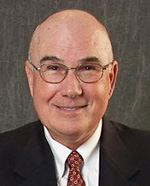What Is TMJ?

Jaw pain and jaw problems are the hallmarks of TMJ disorder. But first, it's important to understand the difference between two abbreviations: TMJ and TMD.
The temporomandibular joint (jaw joint) is abbreviated TMJ. Everyone has two TMJs, one on the left and one on the right, that hold the jaw (mandible) in place. The TMJ itself is a normal part of every healthy body.
On the other hand, TMD is not normal. TMD stands for temporomandibular joint disorder (TMJ disorder or dysfunction). The cause of TMJ dysfunction is not always clear. However, certain factors are associated with increased TMJ symptoms, including:
- Teeth grinding or jaw clenching, especially at night (a condition known as bruxism)
- Jaw dislocation or another jaw injury
- Arthritis or other joint problems
- Stress
These are among the most common symptoms of TMJ:
- Popping jaw or clicking jaw
- Sore jaw
- TMJ headache (a TMJ headache feels very different from TMJ jaw pain)
TMJ dentists and other TMJ specialists can offer a range of treatments for TMJ.


